Review for Captain Earth Part 1
Introduction
I did my stupid, judging an anime by the title thing again, and was briefly ever so excited by the advent of Captain Earth in the UK. With a title like that, can you blame me for thinking it was another superhero anime. That’s one genre that anime rarely touches, as it’s the US with companies like Marvel and DC that have cornered the market. People might have special abilities in anime and manga, but they rarely wear capes and go around saving the world, and usually have enough on their plate with all the other people they meet with similar abilities. Until recently, the closest we had got was Darker Than Black, which was more Heroes the TV programme than superheroes. Then, like a bolt of lightning, anime took on the US in their own back yard with Tiger & Bunny, fusing traditional superheroes with reality TV, and if not beating the US at their own game, at least matching it. Like many anime trends, I expected it to be the first of a new bandwagon, and that loads of other animation studios would be creating caped superheroes of their own. Surprisingly that hasn’t happened. The Tiger & Bunny bandwagon remains sans band, or at least I thought that was the case until Captain Earth turned up for review.
Only Captain Earth isn’t Captain America in an era of globalisation. This one travels on another, longer rolling and much more heavily laden anime bandwagon. It’s another giant robot show, never my favourite genre. On the other hand, it’s from Studio Bones, who have impressive giant robot credentials, with shows like Rahxephon, and the Eureka Seven franchise under their belt. They have a reputation for quality animation, decent characters and storytelling, which definitely makes Captain Earth worth consideration.
Daichi Manatsu is your average high school student, albeit one whose life is a little aimless. That changes when he sees a news report of a strange, completely circular rainbow. He’s reminded of his childhood in Tanegashima, where his father worked as an astronaut before dying in an accident. Suddenly he has a direction for his life, or at least the summer vacation, and he heads back to Tanegashima, where as a boy he used to explore the space centre, and he made friends with a strange boy named Teppei who could create circular rainbows, and where he woke a girl from a weird bubble, and promised to show her a boomerang.
He’s drawn to that same ‘playground’ again, although this time he encounters a mysterious schoolgirl with a recorder, who presents him with a bizarre gun. The next thing he knows, he’s at the command of a giant robot called the Earth Engine, launched into orbit to defend the world against alien invasion. His childhood adventures were real as well, and with Teppei, the girl Hana, and a hacker named Akari, they’re now members of the Globe organisation, working to stop the Kill T-Gang attacks. It also becomes clear that his father didn’t die in a simple accident. He was a defender of the Earth, a Captain, and Daichi might just have the right stuff to be a Captain too.
The first thirteen episodes of Captain Earth are presented across two discs from MVM. It’s also available on Blu-ray should you wish to partake of Bones’ animation in HD.
Disc 1
1. Earth Engine Open Fire
2. My Gun’s Name is Livlaster
3. The Rainbow of Albion
4. Assault of the Planetary Gear
5. Starry Sky’s Picture Book
6. Kivotos Plan
7. The Midsummer Knights
Disc 2
8. Sign From the Dark
9. Magical Girl Akari-chan
10. On the Windy Planet
11. Through the Window of Setsuna
12. Boys’ Battlefield
13. My Town
Picture
Captain Earth gets a 1.78:1 anamorphic, native PAL transfer on these discs. It’s come via the now typical route of Sentai to Hanabee to MVM, and there’s nothing to complain about with the transfer. The image is clear and sharp throughout, colours are consistent, and signs of compression are minimal, really just those odd moments of aliasing and noise during extreme action that you’d get at the limits of the DVD format. Blu-ray will definitely be the preferable choice here, given that this is another exquisite, Bones sci-fi animation. It takes a leaf out of Eureka Seven AO’s book when it comes to the look of the character designs, the detail in the world designs, and the fluid and energetic impact of the animation, especially in the show’s well designed and executed action sequences. There is a bit of corner cutting too though, with the Earth Engine launch sequence, painfully well animated, but recycled each time it appears, buying a minute or so of animation every time it repeats.
Sound
Captain Earth gets a DD 2.0 Japanese track with optional English subtitles. I had somehow come under the impression that Sentai dub all their anime as a matter of course (resulting in the odd lacklustre dub), but Captain Earth was a reminder that they do the occasion subtitle only release. And unlike Needless and Chunibyo, which got dubbed eventually for their Blu-ray releases following an initial DVD toe in the water, Captain Earth came out on DVD and Blu-ray simultaneously, making it a lot less likely that Sentai will eventually go back and revisit the show for a dub. The audio is fine, well balanced, and with no glitches or squawks to complain about. I really do like the music for the show, as they went in a grand, theatrical direction for the soundtrack, although the theme songs are forgettable. The characters are cast well, with voice actors suited for their roles. As for the dialogue... well that’s another matter. The subtitles are timed accurately and free of glaring typographical errors.
Extras
The discs present their content with static menus. The only extras are on disc 2, and amount to the textless credit sequences, and trailers for Humanity Has Declined, Super-Sonico the Animation, and Hakkenden.
Conclusion
One thing I love about Studio BONES productions, especially their sci-fi anime, is that they avoid exposition and info-dumps. Their storytelling style is to drop the viewer right into the middle of the action, and expect them to pick it all up as they go along, saving any major revelations for the end of the story where they rightly belong. It means you have to actually engage with the story, and relate to the characters, which is always a good thing. Of course after that, it comes down to how well the story is told, but BONES have in the past given us classics like Wolf’s Rain, and Darker Than Black, great, spectacular sci-fi anime.
On the other hand, sometimes the story isn’t that great, or there just isn’t that much to it, and then you get the jargon creeping in, strange words, terms and acronyms to evoke a future world, a technically complex language designed to obscure or distract from the simplicity of the story, or the clichéd nature of the characters. It happens in degrees. There was a little of it in Rahxephon, a tad more in Kurau Phantom Memory and in Xam’d, while I felt that I had to take notes when it came to Eureka Seven AO, and Blast of Tempest. Captain Earth might just be the worst example yet for distracting jargon, trying to hide the fact that this is just another giant robot action show. It’s another one where a teenager can get into a giant robot worth billions and instinctively fly it the first time, better than a trained fighter pilot who’s spent hundreds of hours reading manuals and flying simulators, and said teenager will be the last best hope of mankind against other teenagers in enemy robots.
Reading the subtitles actually felt at first like hearing a foreign language. English has become a universal, with certain technical terms and phrases entering other languages. If you ever overhear a conversation in a foreign language, it will seem like a long stream of blah, garnished with the occasional English phrase or word for which there is no native equivalent. There were times in the show when I was grappling with the subtitles that it felt like loads of inconsequential show specific jargon, held together with English, but lacking the context for it to make sense. They’re throwing around words like Kill T-Gang, Machine Goodfellow, Earth Engine, Livlaster, Ark Faction and Intercept Faction, Orgone Energy, Libido, Lead Gear, Planetary Gear, Blume, Ego Block, Avatar, Designer’s Children, Neotony, Impactor, Abreaction, Install System, and I had no idea what was going on, especially at the start. As the show unfolds, it begins to make some sort of sense, but even now at the halfway mark, I’m taking certain phrases as white noise, hoping at some point in Part 2 the meaning will become clear. It happens a lot less now, but when I started collecting anime on DVD, companies used to put glossaries, either on the disc, or in booklets slipped into the case, a helpful guide to what terms and phrases meant. That would certainly have been useful here.
It really is a simple story made complex by its language. Like so many of its genre, it features good guys flying giant robots to protect the Earth from alien invaders who attack the Earth in giant robots. Captain Earth adds a layer of complexity by having our heroes flying their giant robots up into space, where they dock inside even giant-er robots with which to do battle. The villains on the other hand have to pilot their giant robots for 4 minutes before they can psychically project their giant-er robots out into space to attack. Don’t worry, it looks cool, which is the whole point, and it’s relatively easy to pick up once you get past the jargon. But I have to admit that it took me far longer than I expected to see past the deliberately complicated story set-up to start enjoying the show. I spent the first eight episodes out of my depth, trying to fathom what was going on, too nonplussed to engage with the story, before it finally clicked with me, and I could enjoy an episode without wondering what everyone was talking about.
What made me want to stick with the show was of course Studio BONES’ animation, which is top notch as always. The mecha fighting sequences are grand and epic, while you also have the obligatory hero transformation sequence to ogle at every few episodes. Here, the hero boards his giant robot, inside a rocket which is launched into orbit. The payload doors break off to reveal the robot, which activates its rocket engines which boost it up to a satellite, the first of three, in which it docks with part of the giant-er robot. Three of these satellites are in alignment at this point, and the robot section boosts upwards, collecting and docking with other parts on the way, until the third satellite, at which point it is complete, and ready to do battle with the invaders. It’s wholly impractical and makes no common sense whatsoever, but it looks spectacular, and it buys the animators about 90 seconds each time it’s used.
The character animation matches the mecha animation in terms of quality and detail, and these are very likeable and recognisable character designs. The other thing that makes me want to persevere with the show is the quality of the characterisations, which at least warrant some of the depth the show purports to, even if the jargon is excessive. Daichi is the usual hero archetype, orphaned of course as his father died doing the job he finds himself in (and no mention is made of a mother), but as a child in Tanegashima, he first encountered Teppei, the blue-haired boy with strange powers, and Hana, the girl asleep in a bubble when he first saw her. Their brief friendship had lasting consequences that play out when they are reunited.
Hana is still an enigma at this point in the series, obviously has some powers as a facilitator (her song helps Teppei access his abilities), and she has a pet squirrel named Pitz, the obligatory mascot animal, who communicates prognostications through her so they know where the invaders will attack next. Teppei’s an odd one too, he’s actually one of the invaders, but because of Daichi’s friendship when they were children, he chooses to side with humanity, even giving up some of his alien powers to do so. The fourth member of the group is the hacker Akari, daughter of the base commander and the satellite commander, who hacked her way onto the team, and is by turns mischievous and frivolous, but a whole lot of fun. Her navel forte therapy is quite funny.
As for the villains, if you’ve read the blurb on the back of the case, announcing them as invaders from Uranus, you’ll probably scratch your head and remain perplexed for the first eight episodes just as I did, as they look wholly human and Earth-bound for the early episodes. It may be a bit of a spoiler, but it might make some more sense if I explain what I’ve figured out so far. A company called Macbeth Enterprises created the Machine Goodfellow robots, and needed special pilots for them, so they genetically engineered the Designer’s Children. And because they were special, they became vulnerable to the invaders’ disembodied intelligences, who wear the human bodies as Avatars. They use these Avatars to pilot the Machine Goodfellows and awaken the Kill T-Gangs so they can attack the Earth and harvest all the life energy. All it takes is for one to get through and that will be that.
When we start the show, we know only two Designer’s Children, three including Teppei. Amarock is a boy with an attitude problem and the one who killed Daichi’s father eight years previously, while Molkis is a girl who dresses for the fan service. They ostensibly work for Macbeth Enterprises who have a vested interest in the plans for the Earth’s defence, interests that appear to go in a different direction from those that the Globe organisation that Daichi works for believe in. But Amarock and Molkis are also working to advance the alien invasion, and they also have subverted the Macbeth Enterprises AI computer to their cause.
As we get further into the story, it turns out that there are more Designer’s Children out there, and they all harbour these alien intelligences, lying dormant within until the memories are reawakened. It’s here that the story got interesting for me, taking a step back from the deep-space giant-er robot action, and getting more Earth bound, as Amarock and Molkis try first to get Teppei back on their side, and then go looking for other Designer’s Children to recruit. It becomes a race against time to find them, with Daichi, now a Captain, and his team trying to stop their reawakening, and also stop them from launching their Kill T-Gangs. Around this time we also encounter a girl named Setsuna, ostensibly a Designer’s Child, but with a mascot squirrel of her own, and perhaps a counterpart to Hana. Her storyline pauses at an enigmatic moment, but no doubt we’ll find out more in the second half.
Captain Earth isn’t a great show at this point. It has its flaws, the abundance of jargon its most obvious. But it also has a tendency to toy with ideas and storylines and then unceremoniously drop them, and you wind up hoping that at some point they’ll be picked up again. At the start of the show, there’s a point where Daichi and his friends are considered a security risk, and a particularly odious man from the Salty Dog security section throws his weight around and tries to control them, and when that fails, sabotage them. There’s that, and the whole faction thing in Globe, the Intercept and the Ark factions which indicate a whole lot of politicking and manoeuvring going on, which all seems to get forgotten once the hunt for the Designer Children gets underway, as does Amarock and Molkis’ deceptions at Macbeth. Hopefully these will be picked up again in Part 2, but there’s a certain lack of consistency in the storytelling.
It’s one of those shows that I want to give the benefit of the doubt to. Yes, the jargon hides a simple and familiar premise, but the quality of the animation does much to please the eyes, while the likeable characters and the way they are written, makes me want to persevere with the show. There are those anime shows that are a confused mess from beginning to end, but there are also those shows that start off piecemeal and unfathomable, but by the end, everything falls into place, and those shows become lifelong favourites. Only Part 2 will tell which one Captain Earth is.
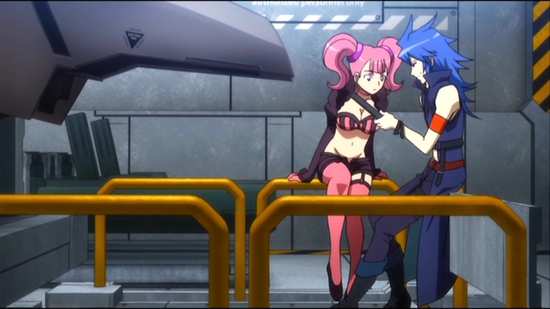
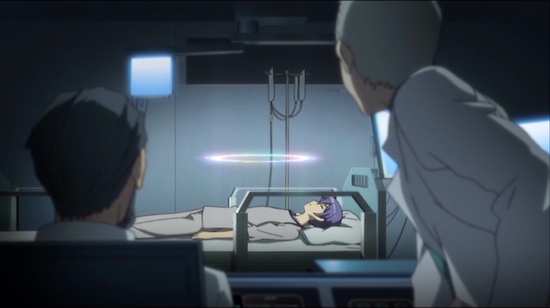
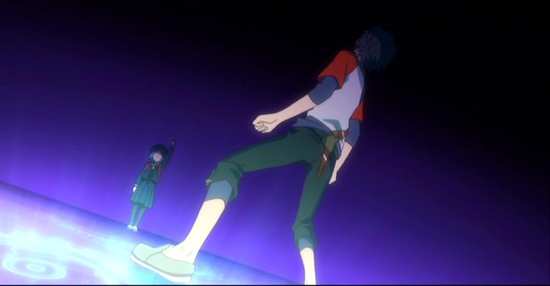
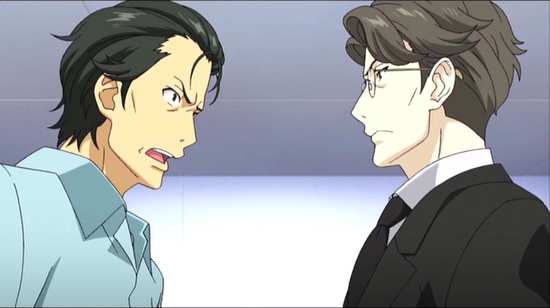
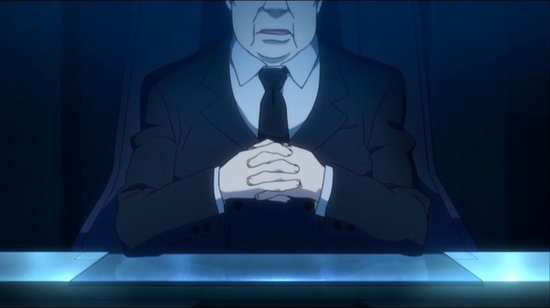
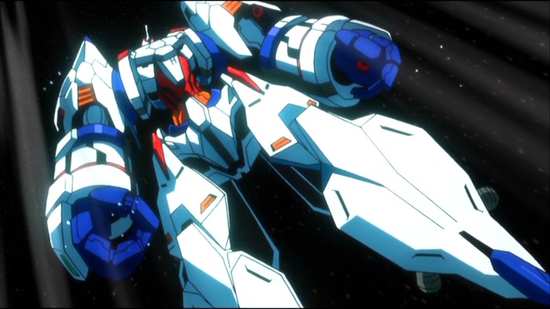
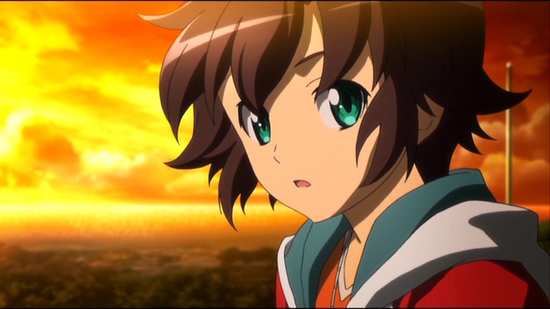
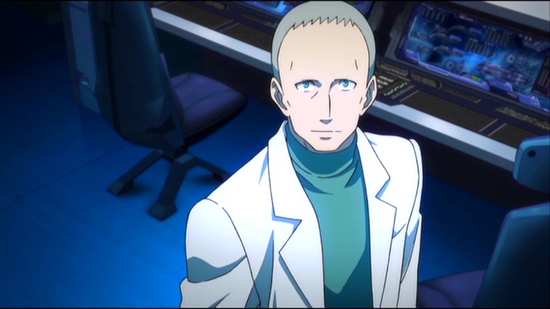
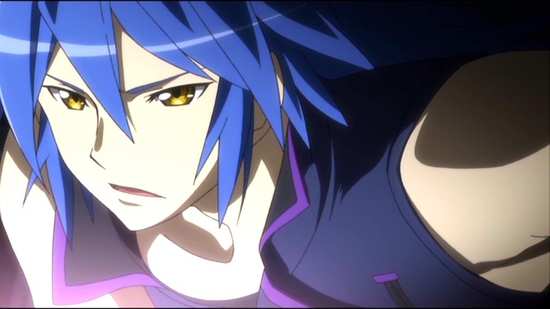


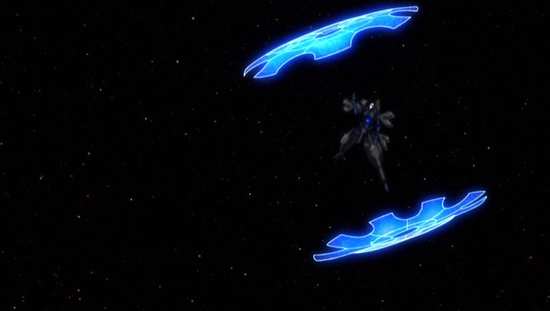
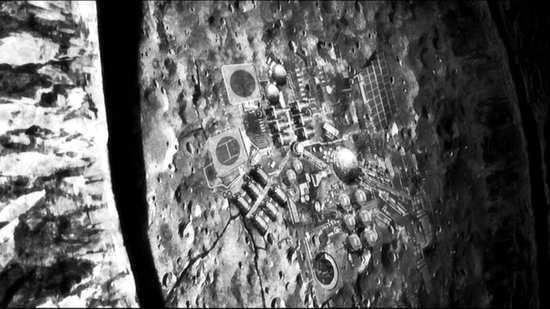
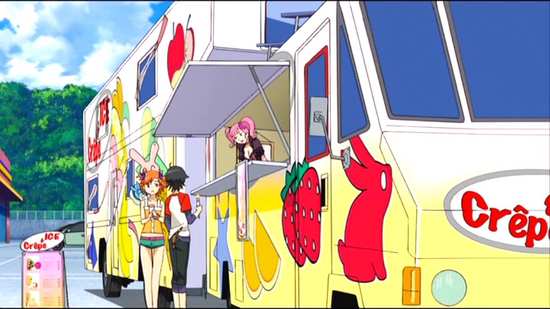
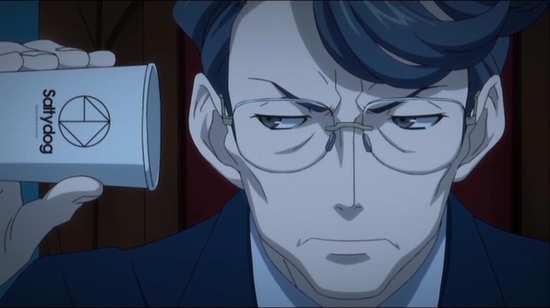
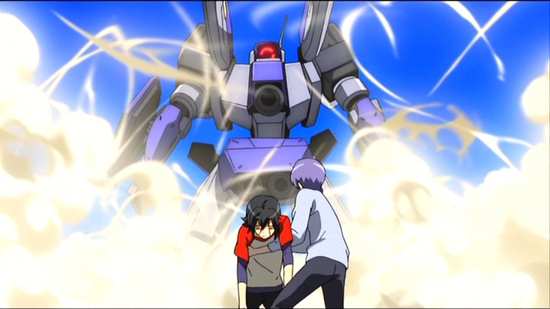
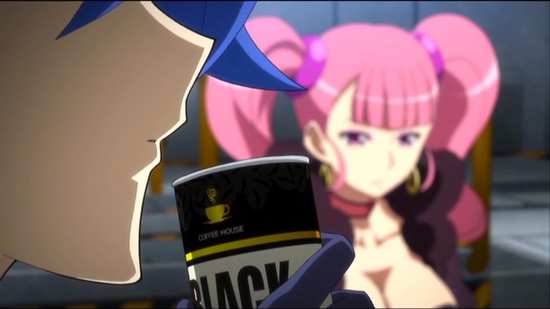
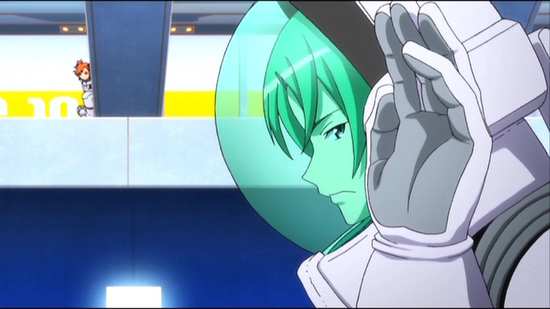
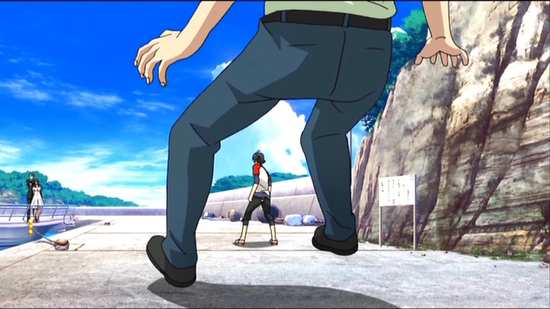
Your Opinions and Comments
Be the first to post a comment!